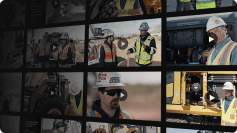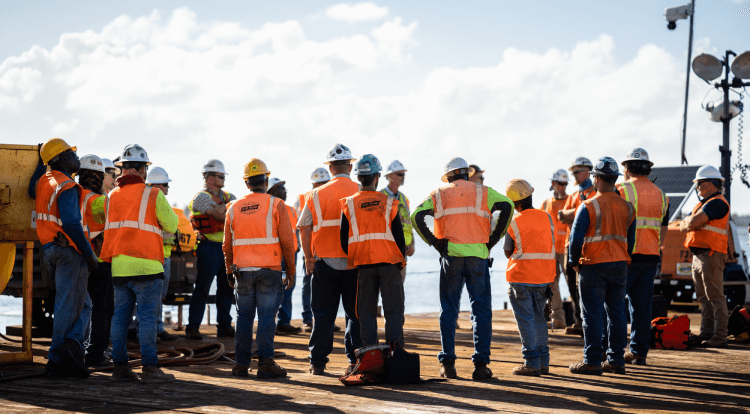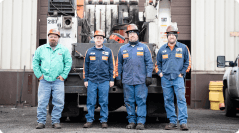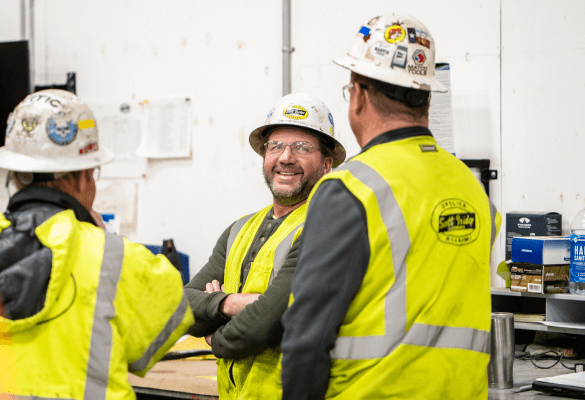How to Drive Profitability in the Dirt World
Written by Randy Blount
January 16, 2022
Around 2005 to 2007, Blount Contracting wasn’t making very much money. They had paused growth and were trying to refine systems, during which Blount himself had an epiphany: “What we do has a lot of risk. Why aren’t we making more?”
What he saw around the industry was 3% to 7% profitability, with some higher margins at smaller and more specialized companies. “You have all this risk. You’re making less than 10%,” noted Blount. “You’re running a negative cash flow business and growing it.”
To enjoy growing such a business, Blount wanted at least a 10% profit. He looked for how to be more efficient. They had great relationships with some joint venture partners, to see how larger companies did it. “There’s almost kind of a trend,” said Blount. “The bigger you get, the less profitable you are,” so they started asking more questions.
Traditional economics says you get efficiencies as you scale: with purchasing power, with size. You should expect to get more profitable as you grow. What is it about the construction industry?
To grow and be profitable, ask the right questions.
As Blount and his team found, to become more profitable, there are a lot of things to look at: Over time, what will drive our economic engine? Where is there money to be made? What can we be world class at? What are we passionate about?
They decided to analyze their work by industry: Were they profitable when they did energy, data centers, higher ed, subdivisions, highways? In some sectors, they consistently saw higher margins. In others, they struggled to make even.
And then they looked the data by job size: They were really profitable on jobs less than $100,000. Jobs from $100,000 to $700,000 were closer to breaking even. Blount admits, without the data, they could have thought $700,000 was their bread and butter. Then, for jobs over $1.5 million, profitability goes up. The numbers surprised them.
What about when they win work? Is there anything seasonal? Arizona’s not super cyclical, according to Blount, yet they had a lot more work in the summer.
To get a clearer picture of what makes your business profitable, the first step is to analyze your market and what you’re good at. And then discuss why. As Blount noted, “If your job costing’s really good, it’s easier.”
To grow and be profitable, take care of the business.
Profitability is one of those rising tides that lifts all boats. As Blount noted, “Within six months, our people were happier — because we’re winning, we’re making money. And then we just kept winning.” When you’re winning, “Retention will go up, profitability will go up, you’ll smile a little bit more, probably live a longer life.”
One of the lesser-known benefits of profitability is security. While growing the business, be sure to take care of the business.
If you’re profitable, look at the larger picture: Look at your tax liabilities. If you’re growing a business, you’re likely running a negative cash flow. Don’t take a huge distribution. At Blount Contracting, “We actually took almost no distributions from the company — just enough to cover taxes — for a period of five years. Because we knew where we wanted to be,” he said.
As Blount pointed out, “The stronger your balance sheet gets, the bigger the jobs you can do. If you’re doing a good job, a bigger job means more profit. Honestly, there's not usually a whole lot of difference in managing a $10 million dollar job or a $20 million job, when it comes to the actual management of the job. Usually, you're just there a little bit longer, or there's more material.”
So, being profitable can give your business the opportunity to build bigger projects, with longer life cycles, which may help you be more efficient, rather than opening and closing lots of smaller projects across the year.
Takeaways.
Profitability matters for everyone in the organization. Even as an entry level person, you will advance your career if you care about making a job or company as profitable as possible.
Blount Contracting has always cared about people. Without the downward bill-paying pressure, Blount said, “You can be much more creative in showing that gratitude,” such as the well-known Blount gray company swag. Which has contributed to building the Blount team and creating visibility.
“Managing profit, and doing the best you can with the resources you have, allows you to outlast many people, and allows you to continue forward," Blount said.
He would advise companies and leaders to be analytical about it: “The analyzing we were doing, it wasn’t a gut check,” said Blount. “Actually, the numbers surprised us. Find a way to take a metric and check yourself. If you don't, you're going to continue to make those same gut calls that may have gotten you into the position you were.”
Want to learn more about the money side of earthmoving? Check out what our friend Ron Kellish, CFO of Bemas Construction, has to say about it.














